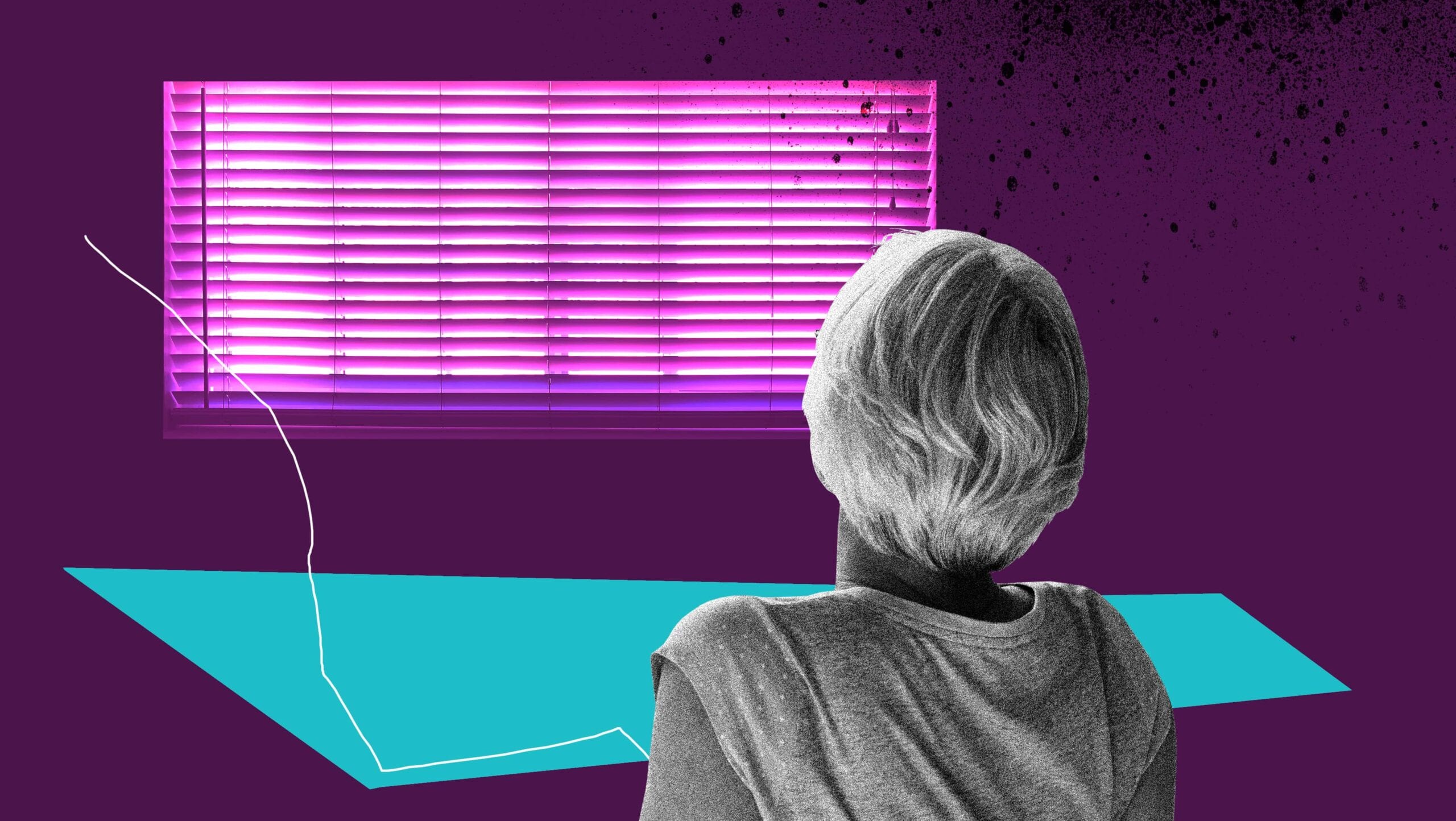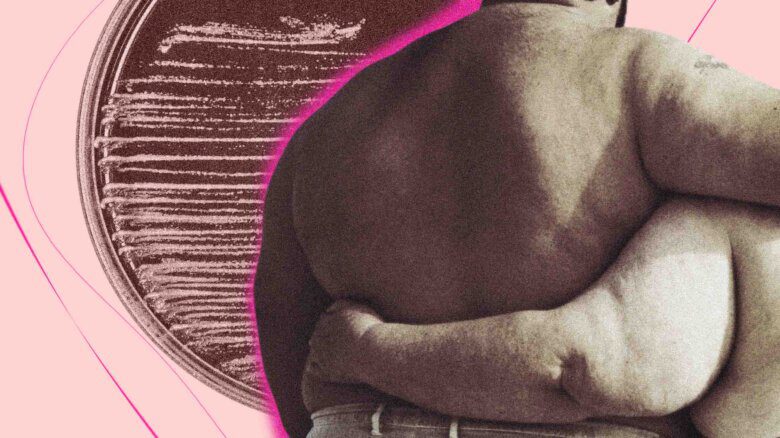I’ve spent the past decade and a half feeling afraid of where I might end up living when I get older and need more care than my chosen family can provide. These fears first took root when I was a graduate student in my mid-twenties researching home care (supports and services intended to help people remain in the community where they live). My research opened my eyes to a system of home- and facility-based care that left me disillusioned and frustrated by how it persistently devalues the work of caregivers and gives care recipients—predominantly older adults, many of whom are disabled and chronically ill, and younger disabled people—the bare minimum of care.
It’s a system reliant on gendered, hetero- and cisnormative assumptions about family members filling the gaps in care it can’t provide. The more I learned, the more vulnerable I felt as a queer person without siblings, adult children or other close biological family members. LGBTQ2S+ people have a long history of interdependence, mutual aid and caring for each other, but not enough of us are paying attention to the urgent need for better housing and care for older adults and disabled people in our communities. We need a queer and trans revolution in care. That means confronting the nightmares of the current system and dreaming of different possibilities, then mobilizing around them. For it to succeed, our revolution must be led by and grounded in the desires and expertise of LGBTQ2S+ older adults and disabled people and rooted in a commitment to disability justice.
“For many Canadians, the choice to move into residential care is not really a choice at all.”
Let’s start with the nightmares. While most people want to stay in their homes as long as possible, the current system of care drives them into institutional settings, like long-term care facilities, once they pass a certain threshold of need—a threshold determined by ableist, ageist assumptions of how much care is “too much” to be delivered in the community. As disability studies scholars Gillian Parekh and Kathryn Underwood put it, “For many Canadians, the choice to move into residential care is not really a choice at all.”
Although I was studying other people’s experiences, I came away from my graduate research convinced I would someday be left to the mercy of a system not set up to meet my needs, let alone honour my desires as a queer person. I was shocked by the cost of the private care some people were able to purchase to supplement what they were offered or replace what they couldn’t get from the public system. I learned women were especially vulnerable to poverty and isolation in old age; it felt like a window into my future and I didn’t like what I saw. I dreaded the idea of spending my final days alone and isolated in a long-term care facility, cut off from my chosen family and community.
I still carry these fears with me 15 years later, and I’m not alone. Although a relatively small proportion of older adults live in residential facilities—under 7 percent of Canadian seniors, according to the 2016 census—the possibility of ending up in long-term care evokes considerable fear and anxiety among LGBTQ2S+ older adults. They worry they will experience discrimination from staff or other residents, be separated from partners and cut off from chosen family or have to go back into the closet in order to live safely.
Trans and gender-diverse older adults fear they will experience transphobic violence from staff and other residents in long-term care. They express concerns about being outed, denied care or not being able to express their gender identities. Bisexual older adults, who experience biphobia, stigma and lack of social support, may experience further marginalization in these facilities. Racialized and Indigenous LGBTQ2S+ older adults face the added violence of racism and settler colonialism, which affect their health and well-being and create further barriers to their ability to access affordable housing as they age.
These fears are well-founded, as researchers have documented the hetero- and cisnormative assumptions that shape service delivery in many long-term care facilities. These assumptions are evident in administrative forms with binary options like female/male or wife/husband, the failure to include sexual orientation and gender identity in anti-discrimination policies and images in facilities that show only straight, cisgender couples. Researchers have pointed to a “we treat everyone the same” approach that leaves LGBTQ2S+ older adults in long-term care underserved and invisibilized. There is also a persistent tendency to desexualize older adults and disabled people, and that takes on a particular urgency for LGBTQ2S+ people living in institutional contexts, where they may not feel supported to express their sexualities.
There is a constellation of factors that increase the likelihood that LGBTQ2S+ older adults might end up in long-term care, even if it’s the last place they want to be. Older people in the LGBTQ2S+ community are more likely to have lower incomes, have few or no children, live alone and be reliant on friends and chosen family for support and care. They experience higher rates of disability and chronic illness than their cishet peers. LGBTQ2S+ older adults identify access to safe and affordable housing and the high cost of privately-delivered home care as barriers to their ability to continue living at home and in their communities as they age. Those who are able to access home care may conceal their LGBTQ2S+ identities or avoid using these services altogether out of fear of discrimination.
“There is a constellation of factors that increase the likelihood that LGBTQ2S+ older adults might end up in long-term care, even if it’s the last place they want to be.”
This year, I’ve watched in horror and heartbreak as journalists and researchers chronicle the devastating toll COVID-19 is taking on people living and working in Canada’s long-term care sector. An analysis released this June showed outbreaks in these facilities accounted for more than 80 percent of COVID-19 deaths in Canada, mostly among residents. In the US, it’s estimated that at least 77,000 residents and workers in these facilities have died. The majority of people living in long-term care facilities are older adults and younger people with disabilities. Most of the workers caring for them are women, many of whom are also racialized and newcomers. As disabled activist Alice Wong writes, these types of congregant settings “do not ensure safety or care” for residents or workers.
While problems with the long-term care system have received a lot of media attention lately, they’re not new. Advocates and researchers have long drawn attention to the vulnerabilities in this system of care. It’s chronically under-resourced and under-staffed, and workers in the system are underpaid and undervalued. These conditions are made worse by privatization, where services are delivered by for-profit corporations more concerned about their bottom lines than ensuring the safety and well-being of residents and staff. In Canada, just under half of long-term care facilities are private for-profit entities; research shows these kinds of facilities tend to have lower staffing levels and residents are more likely to be hospitalized or die.
And there’s not enough care to meet demand. It’s estimated that more than 40,000 people are on wait lists for long-term care in Canada and more than 430,000 people have unmet home care needs. That means they’re not getting enough help with activities that could enable them to continue living in the community, like bathing, meal preparation or housekeeping. These gaps in care are worsened by poverty and a massive undersupply of affordable, accessible housing for older adults and disabled people. Jonathan Marchand, a disabled activist and advocate living in a Quebec long-term care home, recently spent five nights in a cage outside the provincial legislature as a protest against conditions in these facilities and lack of access to the supports disabled and older people need to remain in their communities.
If LGBTQ2S+ older adults are so fearful of living in long-term care facilities and conditions inside them are so dangerous and antithetical to people’s desires, why do we let them take up so much space in our collective imagination? What impact does this have on our organizing and advocacy efforts and the resources allocated to them? How does it limit our horizon of possibilities and diminish the forcefulness of our demands for change? Don’t get me wrong—I’m grateful for the important and necessary work many activists, advocates and researchers are doing to increase LGBTQ2S+ competency and awareness among staff and residents in long-term care. Their much-needed efforts have sparked the creation of toolkits, training modules and an equality index all aimed at making long-term care facilities safer and more inclusive for LGBTQ2S+ people.
“What would it take for us to confront our belief in the terrifying inevitability of long-term care and instead learn to build more liberatory alternatives?”
Still, I wonder what it might look like if our community mobilized around alternatives to long-term care from a perspective rooted in disability justice, anti-ageism and solidarity across generations. What would it take for us to confront our belief in the terrifying inevitability of long-term care and instead learn to build more liberatory alternatives? Inspired by deinstitutionalization movements, I’m curious about options that challenge the idea that anybody is “too sick” or “too dependent” to continue living in the community. In this spirit, I’m paying close attention to disabled activists’ calls to abolish nursing homes and end all forms of custodial care, including long-term care homes. COVID-19 has shown that we need a mass movement to demand better housing and care for older adults and disabled people, and better working conditions for the people paid to care for them. That means we need alternatives to the current system. We need to learn to dream differently. As queer disabled attorney and activist Katie Tastrom reminds us, “Abolition is as much about building the appropriate resources and supports as it is about tearing down the harmful structures that cage, torture, and kill us.”
Creating these alternatives will only become more important as the population of LGBTQ2S+ older adults grows. In Canada, it’s estimated that approximately 395,000 older adults currently identify as LGBTQ2S+. In the U.S., the population of LGBTQ2S+ older adults is estimated to be in the range of 1.75 million to 4 million people, a number expected to double by 2060. Our need for accessible, affordable and inclusive housing, care and support will grow along with us. I want to be part of building a world where LGBTQ2S+ people feel enthusiastic about the kinds of housing, care and community available to them as they get older and need more support. It’s not enough to keep our fears and nightmares at bay. I want there to be creativity, pleasure and possibility in what we imagine and build together.
That’s why I was excited to talk with Dr. Kimberley Wilson, an associate professor at the University of Guelph who studies LGBTQ2S+ aging. She’s currently co-leading a study on age-friendly communities for LGBTQ2S+ older adults. When I ask what kinds of supports LGBTQ2S+ older adults need to age in place, Wilson emphasizes the diversity of the LGBTQ2S+ community, pointing out, “There’s no one-size-fits-all model.” Age-friendliness, she says, is “a process, not a destination” that requires a community commitment to listening to the voices of a broad range of LGBTQ2S+ older adults and acting on their wants and needs.
When I read researchers’ accounts of what LGBTQ2S+ older adults say about where they want to live as they age, I notice some themes: The desire to live in diverse, intergenerational communities; to have agency in decision-making; and to have access to affirming, knowledgeable, compassionate caregivers and health care providers. In a recent Canadian study on housing needs among LGBTQ2S+ older adults, participants expressed a desire for “housing that purposefully fosters community connectedness,” housing that is flexible enough to adapt to people’s changing needs and disabilities as they age and combines private space and communal spaces where intergenerational activities are available.
These places do exist. Wilson shares a story of touring Roze Hallen, a co-operative ‘living-apart-together’ community in Amsterdam created in 2014 by 19 LGBTQ older adults who wanted to grow old together. Four years later, residents moved into the 14-unit building, where they each have their own apartment, along with an extra one for when they need a paid caregiver like a nurse or home care worker to stay there, too. There’s Ingersoll Senior Residences in Brooklyn, a 145-unit apartment building for LGBTQ2S+ older adults where 25 percent of the apartments are earmarked for people who have been homeless and where all residents have access to a centre offering case management, health care and connections to other service providers. Crotona Park, a similar development for low-income LGBTQ2S+ older adults in the Bronx, provides health and cultural programs, meal services and a computer lab. There’s also the Openhouse community in San Francisco. There, a pair of apartment buildings for LGBTQ2S+ older adults flanks a community centre where residents can access community activities and wellness services and get help navigating resources and services.
I also find inspiration in the stories of community elders who have created homes of their own to age in, like legendary Black trans activist Miss Major Griffin-Gracy’s The Oasis, a low-slung house with a bright blue swimming pool under a canopy of oak trees in Little Rock, Arkansas, that also serves as a retreat centre for trans women. Disabled Puerto Rican Jewish writer and activist Aurora Levins Morales created and lives in the Vehicle for Change. It’s a prototype for a mobile form of accessible housing for people living with environmental illness that’s built with chemically safe materials, has filtered air and water and can be moved if the local environment becomes toxic. We can also look to examples of innovative housing models being used in other community contexts: There are villages designed specifically to meet the needs of people with dementia, where they can go shopping, visit cafes and generally move about with more ease, freedom and safety than they could elsewhere; and intergenerational home sharing models that pair older adults with younger people who live with them and provide companionship and support.
“I also find inspiration in the stories of community elders who have created homes of their own to age in.”
As I reflect on these examples, I wonder what possibilities and models can inspire us to imagine new alternatives and motivate us to take action toward implementing them in a way that reflects a deep commitment to equity, justice and collective liberation. Choice and access to housing and care that affirms and celebrates our identities shouldn’t only be available to LGBTQ2S+ people rich enough to pay for them. We need to push back at privatization in favour of public and not-for-profit options. We need to learn from community-led models like queer disabled femme scholar, community organizer and filmmaker Loree Erickson’s care collective, a group of volunteers Erickson self-organized to provide her with needed personal care in her home. Supporting people to live in communities will require vastly increasing access to free and affordable LGBTQ2S+-affirming home care and improving working conditions for paid caregivers. The definition of “family caregiver” needs to become expansive enough to reflect the diverse ways LGBTQ2S+ people create and define family, and so do the supports available to family caregivers. We also need to confront the ways ageism and ableism show up in the LGBTQ2S+ community.
I still have nightmares about what might come with getting older, but I’m also letting myself dream differently than I used to. I’m learning to imagine myself in a small but beautiful apartment designed with accessibility, affordability and comfort in mind. There’s enough space for my partner and me, and an extra room for when we have visitors or need help from caregivers who stay overnight. I choose when I sleep, when and what I eat and when I do activities that feel pleasurable and satisfying to me. I am free to express my identity as a queer femme; I have a rich erotic life that evolves along with my body and my desires as I age.
My imagined home is in an intergenerational, multiracial community where people of diverse ages, gender identities, sexual orientations, abilities, incomes and family configurations live together. There’s a childcare centre, a school, a library, community gardens and communal kitchens where people can cook and share meals. There are spaces where we can be creative, move our bodies in ways that feel joyful to us and practice our faiths. All of the buildings and shared spaces are accessible and so is the local public transit system.
Everyone in my imagined community can easily access free or affordable LGBTQ2S+-affirming health care from integrated teams of kind and skilled practitioners and healers whose work is grounded in disability justice. When someone needs additional care to continue living interdependently in our community, all the help they need is available to them regardless of income. Paid caregivers are compensated generously and treated with respect, and unpaid caregivers feel well-supported to care for their loved ones in ways that feel sustainable to them. Every LGBTQ2S+ older adult in our community is able to live as loudly and proudly as they want to, no matter where they reside or what kinds of care they need.
It can feel scary to get older as an LGBTQ2S+ person, if you imagine aging at all. I’m surrounded by people who are surprised to still be alive because of all the ways death is a constant companion in their lives. And yet, here we are, aging together, hopeful and fearful about what the future might hold. I don’t know if I will be lucky enough to get old, but I do know I want to help dream and fight for something better for our community.


 Why you can trust Xtra
Why you can trust Xtra


